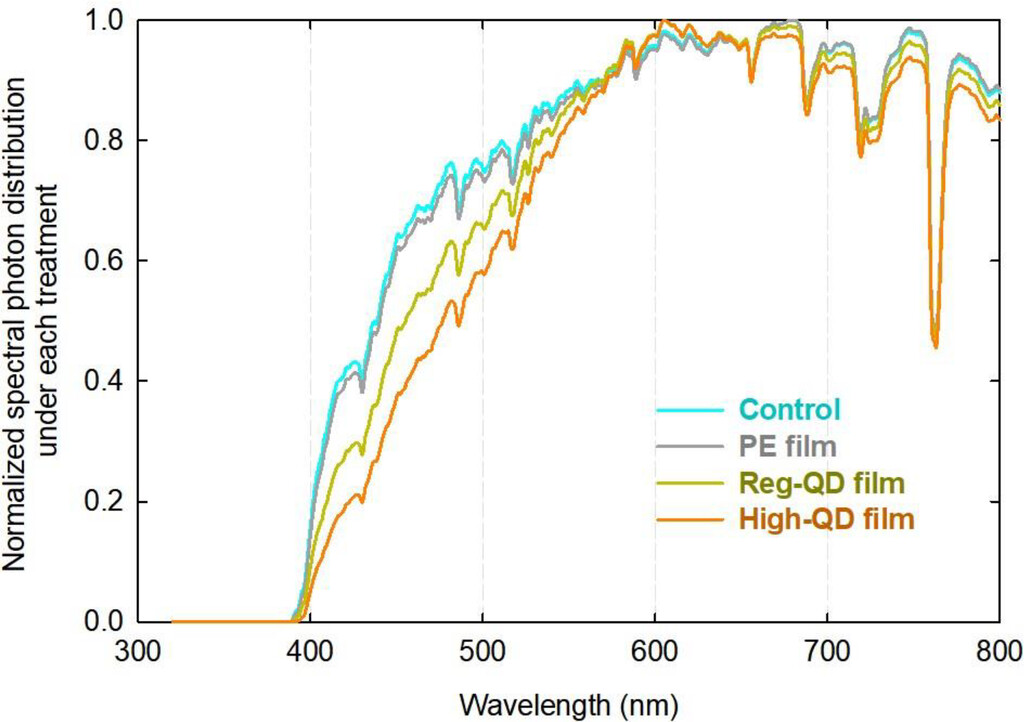More
Luminescent Quantum Dot Films Increase the Radiation Capture and Yield of Lettuce and Sweet Basil Compared to a Traditional/Neutral-density Greenhouse Glazing

Abstract
Utilizing quantum dot (QD) luminescent films as a greenhouse covering material is an innovative method of modifying the greenhouse light spectrum. The QD films convert a portion of high-energy ultraviolet and blue photons to lower-energy photons. Previous research has shown that the application of QD films in greenhouses led to improved crop yields of red lettuce and tomatoes. However, the underlying mechanism of the yield increases has not been fully explored. We quantified the effects of solar spectral shifts attributable to QD films on plant morphology, radiation capture, and, subsequently, crop yield. Green and red leaf lettuces and basil were grown in a greenhouse under four treatments: regular-concentration QD film (reg QD film); high-concentration QD film (high QD film); color-neutral polyethylene (PE) film; and control treatment without any films. Compared to the reg QD film, the high QD film converted a higher fraction of blue photons into longer-wavelength photons, resulting in enhanced leaf expansion, stem elongation, and shoot fresh weight of red lettuce and basil compared with those grown under the PE film without spectral modifications. No significant growth differences were observed between the control and high QD film treatments of red lettuce and basil despite a 23% reduction in the average daily light integral (DLI) under the high QD film treatment. Compared to that grown under the control treatment, green lettuce grown under the high QD film treatment had a similar total leaf area but reduced shoot biomass; this was likely associated with reductions in leaf thickness and chlorophyll content. In contrast, the red lettuce showed more pronounced leaf expansion and reduced leaf anthocyanin content under the high QD film, which likely helped to offset the reduction in DLI. Overall, our results indicated that modifying the solar spectrum with QD films as greenhouse covering material could result in improved crop radiation capture and yield in greenhouse production of lettuce and basil. However, the spectral shifts caused by the QD films may affect crop quality attributes, such as anthocyanin levels and the production of other beneficial secondary metabolites. This effect on crop quality should be carefully considered and requires further study.

